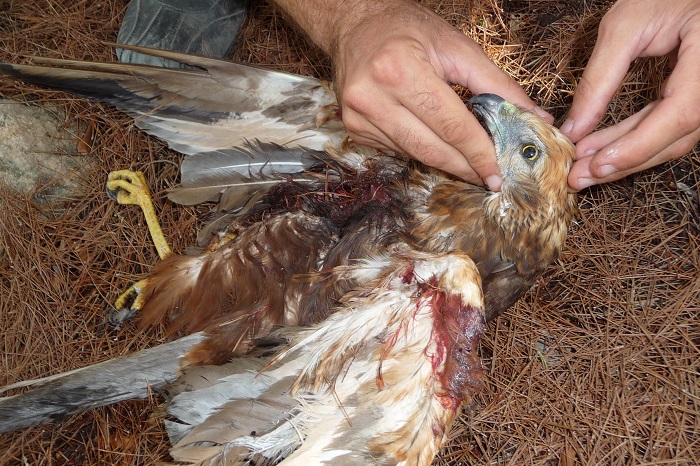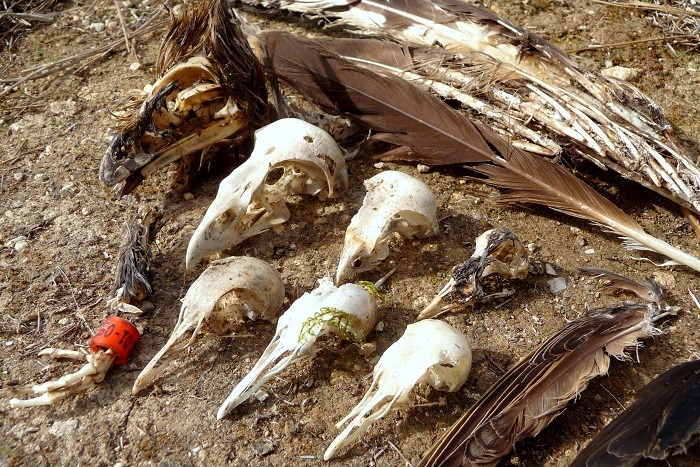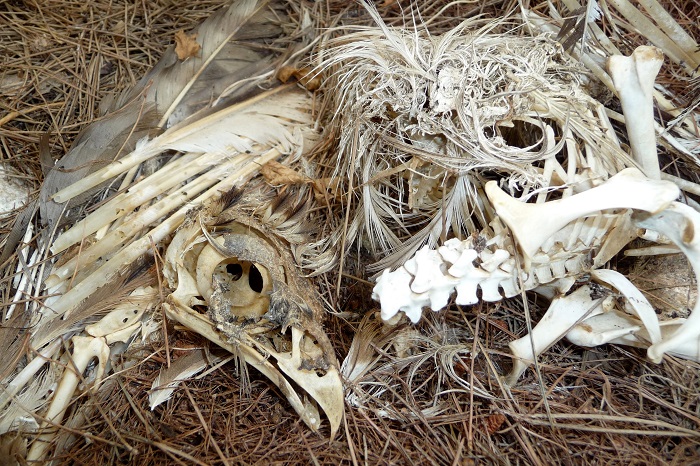The 'bird cemetery' of Mizeb
Massacre in the Maltese hunting associations FKNK hunting area.

In autumn 2009, CABS members made a discovery that highlights the extent of poaching in Malta: In Mizieb, the largest continual forested area on the island, the remains of 192 strictly protected birds were found within a just few hours. These included 38 marsh harriers, 35 night herons, 18 honey buzzards, more than 80 other birds of prey, as well as four nightjars, three hoopoes, a nightingale and an oriole.
The corpses had been hidden in the forest under stones and rubbish and were in various stages of decay - from freshly shot to bone and feather remains that were almost invisible. All the sites were in the immediate vicinity of numbered hunting shelters. The Maltese police seized the birds that we had left on the spot, and the officers did not carry out any professional crime scene or forensic work, nor did they carry out their own search on the huge area.

A few days after the discovery, the hunting association FKNK organised a demonstration in its hunting area against CABS efforts to protect birds - hunting officials accused our members of bringing the dead animals from abroad and hiding them themselves in Mizieb!
In autumn 2010, together with colleagues from BirdLife Malta, CABS members once again found more than 80 bird carcasses in another search - mainly the remains of numerous marsh harriers, honey buzzards, various falcons, cuckoos, bee-eaters, hoopoes and nightjars. During the large-scale campaign, a 26-year-old CABS staff member was attacked by two hunters. The two men tore a bag of dead birds from the bird conservationist's hand and tried to destroy the evidence. Another incident occurred when the FKNK representative responsible for the area punched a CABS member in the face during a discussion. The perpetrator was later fined for assault.

The driving forces behind these discoveries is clear. On the one hand, it is certain that some hunters simply regard the protected birds as living targets and dispose of the evidence of their crimes in this way. This explains why relatively well-preserved birds have been found. On the other hand, trophy collectors, are looking for as many well-preserved specimens of different species, sexes and colour morphs as possible. If they shoot a bird from a distance that turns out to be unusable on closer inspection - e.g. because they already have the colour variant in their collection or the plumage is severely damaged by the shot - they hide and discard it as useless under stones or rubbish. And last but not least there are mistaken kills. This probably explains the cuckoos and nightjar that are always found hidden in Mizieb, which are confused at dusk with their narrow wings and rapid flight with the turtle dove which are the intended target.
At another place - the Dweijra Lines near Mgarr - a similar situation was found during the same period: Here the birds lay in an almost inaccessible historical moat. The specimens were mainly bee-eaters, but also marsh harriers, honey buzzards, cuckoos and swifts. The birds had apparently fallen into the ditch during the illegal hunt, without being able to be recovered, but some of them had obviously been disposed of in the ditch.
In the following years there were further searches in Mizieb, during which less and less dead birds were found under stones. Meanwhile the situation in Mizieb has largely calmed down, the number of illegalities observed is clearly declining - not least because of our permanent presence on the island and especially in this area.
You can download the report from 2009 here:






